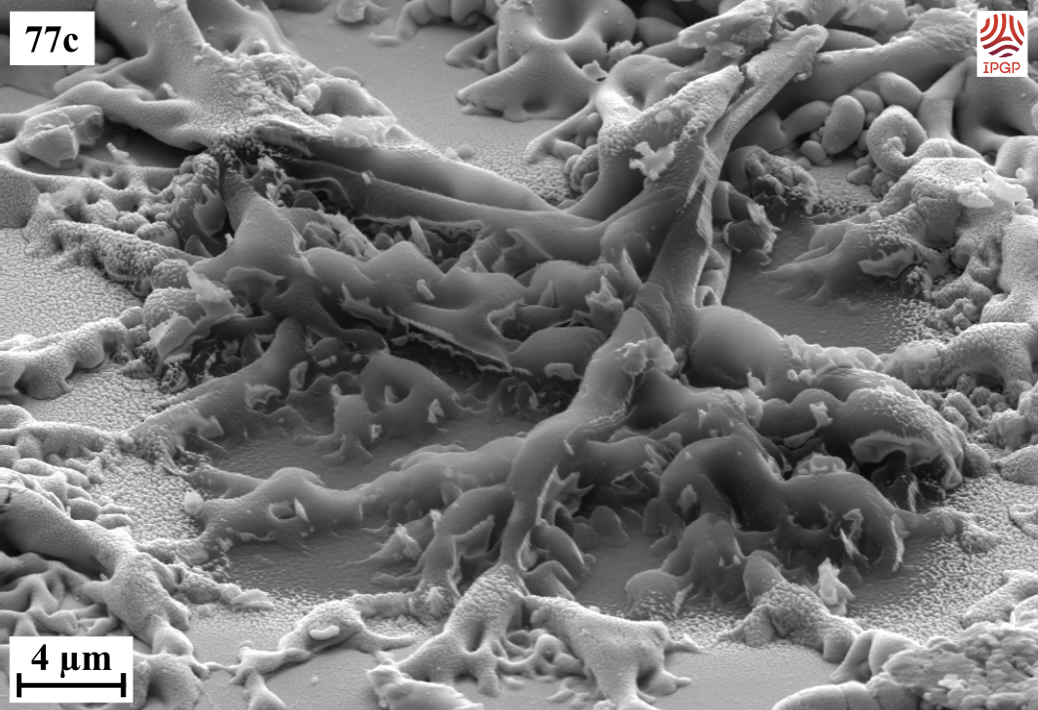The isotopic composition of oxygen in the solar system finally explained
A multidisciplinary team of French and British researchers—affiliated with the Institut de physique du globe de Paris (Université Paris Cité/IPGP/CNRS), the Institut de minéralogie, de physique des matériaux et de cosmochimie (Muséum national d’histoire naturelle/Sorbonne Université/CNRS), the Laboratoire des sciences des procédés et des matériaux (Université Sorbonne Paris Nord/CNRS), the Centre de recherches pétrographiques et géochimiques (CNRS/Université de Lorraine), and the Department of Earth and Environmental Sciences (University of Manchester)—has published a study in the journal Proceedings of the National Academy of Sciences that sheds new light on one of the major mysteries surrounding the formation of the solar system: the isotopic composition of oxygen.

Condensates of organic matter produced during experiment 77c. The darker region shows one of the oxygen isotopic composition analyses / @IPGP
Publication date: 05/05/2025
Events, Press, Research
Related teams :
Cosmochemistry, Astrophysics and Experimental Geophysics (CAGE)








